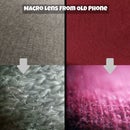Introduction: Snap-Circuits
What are Snap-Circuits? Snap-circuits are modular circuits with a cardboard body and 9v battery connectors for connections. Why not just use perfboard or PCBs for creating circuits?These modular circuits are designed for children or adults who are interested in electronics and want to start tinkering with electronics but are too young or not skillful enough to solder yet. The inspiration for this project came when I saw LittleBits on the internet. After looking at its prices, I thought that they were over-priced and could be easily replicated at home. An ongoing contest at Instructables (Cardboard Contest) also provided motivation.
Step 1: Things Needed
You do not need a lot of things to make Snap-Circuits. In terms of tools, you will need a Hot Glue gun, a Cutter, a Pencil and Scale, a Soldering Iron and some HeatShrink Tubing (DIY substitute instructions given in step 5). Besides that, you will need Solder, Cardboard, 11 9vConnectors, a Buzzer, a Red LED(or any other), a Switch and a 9v Battery,
Step 2: Preperation
First of all, you need to draw all of the modules on the cardboard (Make sure to mark the modules to differentiate between them). This dimensions are adjusted according to needs. I kept the length of the connector part 3 cm and the width 3.3 cm on some modules and a bit less or more on some. The dimensions of the middle part of the module can be adjusted to your needs. The dimensions I used are given in the picture. Once you are done drawing the modules, proceed to the next step!
Step 3: Cutting
Now that you are done with the planning, its time to cut the layouts out. First of all, cut around the outer marks of the layout with just enough force to pierce the first layer of the cardboard. This ensures that you get a clean cut. After that, go over the cuts again this time applying enough force to go all the way through the cardboard. You should now have the layouts cut out. (Sorry for the crap editing in the pictures!)
Step 4: Bending and Glue-ing
Now its time to bend and glue the layouts. First of all, go over the inner marks of the layout with a cutter and make sure to go only through the first layer of cardboard and not all the way through. Once you have cut the layout, bend it 90 degrees outwards and then inwards. You should now have some folded pieces of cardboard. Now hold the cut parts at a 90 degrees angle (hiding the cut) and put some some hot glue at the point where the cut was made. Go in one smooth line and try to not make a mess (like I did :D) or you are going to have a messy end result.
Step 5: Making the 9v Battery Module
Once you are doing with the cutting, its time to make the first module. The first step in making the 9v module is to glue all 9v connectors in place. Try to keep this as clean as possible. Now comes the time to do the wiring. It may be tempting to just join all the black wires and red wires together (which is what I did at first) but it doesn't work that way because the connectors flip the terminals of the 9v battery. The proper way to wire it is given in the pictures. Remember to slide on some heat shrink tubing before wiring if you want it to look neat. if you do not have heat shrink tubing then just solder or connect everything together and after that take a plastic shopping bag (the thin type, this) and cut a strip from it. Then wrap the strip around the wires and heat it with a match or lighter and it should properly shrink around the wires. That's the 9v module done, lets move on to the switch module. (Note: The fumes that arise from melting plastic are dangerous. Do this at your own risk.)
Step 6: Making the Button Module
Time to make the second module! To make the button module first of all you need to glue the button and 9v connectors in place. After that slide your heatshrink on and do the wiring (pictures attached). If you are using DIY heatshrink apply it now, after the wiring. One thing to remember is that this switch is not wired like a normal switch, the output is inverted (which means that the red wire is connected to the black wire). I made the mistake of wiring it wrong and had it do it again so be sure that you see the attached picture. That's all. (Sorry for the bad quality pictures, I was using a HTC M7 to take the pictures and it has the pink camera problem. Would love to win the DSLR in this contest! :D)
Step 7: Making the Resistor Module
Making the resistor module is just like making the other modules. First of all you have to glue the 9v connectors, then put on some heatshrink and do the soldering. Keep in mind that the output wiring is inverted. Once again, a wiring diagram and other pictures are included. Oh and I messed this one up the first time (^_^) by not inverting the output, so keep it in mind while making the module that you have to invert the output. (Note: One thing I forgot to tallk about is the value of the resistor, if you want to light up a Red L.E.D with the 9v battery, a 470 Ohm resistor is fine like I used but if you want to use any other type of L.E.D, use the calculator here to calculate the value of the resistor you will need).
Step 8: Making the Buzzer Module
Not a lot left to say. Same as all the other modules, glue the connectors then flatten the leads, solder and then glue in place. One thing different about this module though is that power can not pass through it and there are two connectors just so that it can be connected either way (you can use one). The reason for this is that the connector on one of the ends has to be inverted in order to let electricity pass through but if we invert one of the connections then the module will work with only one of the connectors (you can do this if you want electricity to pass through the module to another module). Wiring diagram (for both ways to wire this) and pics attached. (Note: Make sure to not cut the wires too short. I made this mistake and that resulted in very odd positioning of it as the wires could not reach till the middle).
Step 9: Making the L.E.D Module (Last)
Time to make the last module! So, this module's wiring is pretty much the same as the buzzer one. It also can not pass electricity through itself (or can if you only want it to light one way). First of all, glue the connectors in place then flatten the leads of the lead then solder everything and glue it down. I have attached images of both the way it can be wired. :) (Note: Do not plug this module directly into the 9v module. I did so just to check if the L.E.D was working. I only did it for a few seconds but it blew the L.E.D and that's why it isn't working in the final pictures. D'oh!)
Step 10: Conclusion and Final Thoughts
Well, this was a long instructable! I think that these modules can really increase children's interest in electronics as they would not have to wire anything and would understand how it all works. One problem I had with these was that the 9v connectors that I had bought were really hard to connect together and I had to use pliers! So while getting the connectors do check if they snap together properly. Although I create only basic modules there is room for a lot more to be done. You can create transistor modules, LDR modules and many other different types of modules. You can take inspiration from LittleBits modules. I'm sorry for the low quality photos and the pink-ish tint in some, I tried my best to get the most clear pictures I could. I was using an HTC M7 which is know for this problem. I could only take the pictures outside in the morning because that's when there is the most amount of light and the lowest amount of pink tint. Thanks for viewing this instructable :3!

Participated in the
Cardboard Contest 2017











